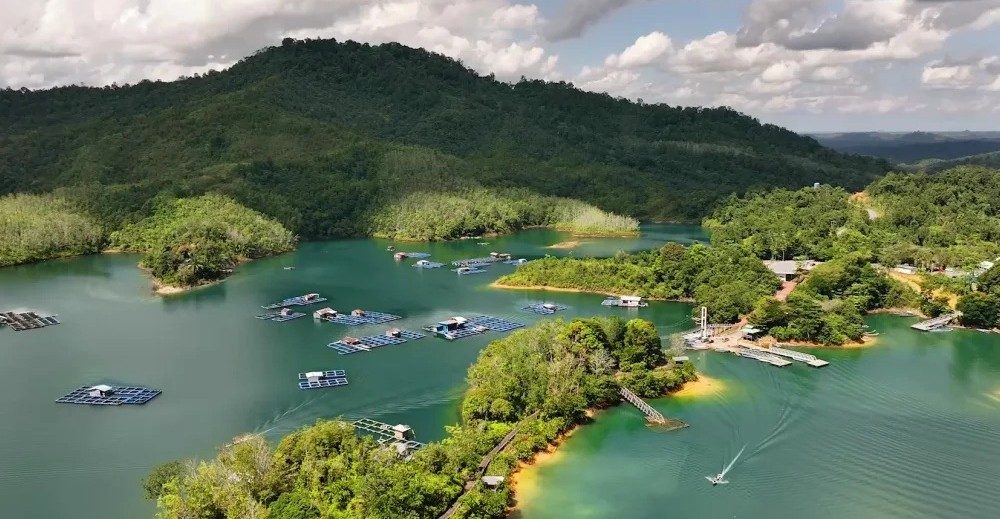Powering Progress: Sarawak and Southeast Asia Step Up the Clean Energy Transition
5 days ago
Southeast Asia’s growing economies are on the cusp of an energy transformation. The region is forecast to account for a quarter of the world’s total increase in energy demand by 2035, a rise driven by accelerating urbanization, industrial expansion, and population growth. Yet with this momentum comes a clear mandate: to ensure that development aligns with sustainability.
From Indonesia’s geothermal reserves to Vietnam’s offshore wind farms, ASEAN countries are looking to diversify energy sources and reduce reliance on fossil fuels. But progress remains uneven. The region’s renewable energy share currently stands at around 15.6%, well short of the 23% target set for 2025 under the ASEAN Plan of Action for Energy Cooperation. The gap highlights not a lack of ambition, but the real challenges of financing, policy alignment, and infrastructure readiness.
To help bridge those gaps, the ASEAN Centre for Energy continues to coordinate policy research and regional cooperation. Meanwhile, eight of the 10 ASEAN member nations have already set net-zero emission goals, signalling growing commitment to sustainable energy.
SARAWAK LEADS BY EXAMPLEWithin Malaysia, Sarawak Energy — the country’s largest renewable energy developer and primary electricity supplier for Sarawak — is at the forefront of this transformation. The company hosted the fourth Sustainable and Renewable Energy Forum (SAREF 4.0) on September 3–4, 2025, under the theme “Partnerships for Our Goals – Sustainable Growth & Prosperity for the Region.”
The forum aimed to accelerate collaboration between governments, private sector players, and multilateral organizations across ASEAN. It also underscored the role of partnerships in strengthening the region’s energy resilience and in achieving the United Nations’ Sustainable Development Goal 7: affordable and clean energy for all.
Sarawak Energy’s own targets are ambitious. The company plans to achieve a total generation capacity of 15 gigawatts by 2035, with at least 60% coming from renewables such as hydropower and solar. Malaysia, for its part, aims to reach a national renewable energy capacity of 40% by 2035 — an essential milestone in the country’s broader green energy transition.
Hydropower already accounts for roughly one-sixth of Southeast Asia’s electricity generation, and in Sarawak it plays a central role. The Batang Ai Hydroelectric Plant, the state’s first major hydro project, continues to serve as a foundation for clean energy growth. Building on that, Sarawak Energy has constructed Malaysia’s first large-scale floating solar installation on the Batang Ai reservoir, producing 50 megawatts of renewable power.
Future projects include an additional 1.5 gigawatts of ground-mounted and floating solar capacity by 2030. These investments not only diversify Sarawak’s energy mix but also support Malaysia’s goal of reducing carbon intensity by 45% compared to 2005 levels.
TECHNOLOGY, STORAGE, AND SMART INNOVATIONClean energy development now depends as much on innovation as it does on investment. Sarawak Energy’s digitalisation initiatives are helping modernise grid systems across the state. Smart grid technology, artificial intelligence, and predictive maintenance tools are being deployed to improve power stability and efficiency.
One of the company’s milestone achievements came in 2024 with the launch of Malaysia’s first large-scale battery energy storage system (BESS) at the Sejingkat Power Plant in Kuching. The BESS enhances grid reliability and facilitates integration of intermittent renewables like solar power, ensuring smoother energy delivery even during fluctuations in supply.
In tandem with these advances, smart metering infrastructure enables real-time energy tracking, allowing for faster outage detection, more accurate billing, and improved energy management.
Sarawak’s clean energy ambitions extend beyond engineering. The state’s broader strategy includes nature-based solutions such as mangrove restoration and peatland conservation, which enhance carbon absorption and biodiversity. Meanwhile, pilot projects in biomass conversion and microalgae-based sustainable aviation fuel (SAF) are exploring alternative energy pathways that align with Sarawak’s sustainability goals.
REGIONAL COOPERATION AND THE ASEAN GRIDThe push toward renewable energy is deeply tied to regional connectivity. Sarawak’s Post Covid-19 Development Strategy 2030 places clean energy at the heart of its industrial growth plan, positioning the state as a “battery” for Southeast Asia.
This vision is becoming a reality through initiatives like the Borneo Grid, which currently connects Sarawak to West Kalimantan in Indonesia, with planned links to Sabah and Brunei. These connections form part of the larger ASEAN Power Grid (APG), a long-term project to interconnect all 10 ASEAN member states by 2045 through shared transmission lines and harmonized regulatory frameworks.
Such integration would enable cross-border renewable energy trade, enhance grid stability, and support regional decarbonization efforts — a crucial step toward energy independence and resilience.
THE ECONOMIC UPSIDETransitioning to renewables is not only an environmental imperative but also an economic opportunity. The International Energy Agency estimates that Southeast Asia’s clean energy transition could create up to 66 million jobs and add over US$5 trillion to the regional economy by 2050. Since 2019, more than 85,000 green jobs have already been created across the region, spanning renewable power generation, engineering, and environmental management.
These figures underscore the potential of coordinated action. With sustained investment, the right policy frameworks, and growing private sector engagement, ASEAN can move closer to a future defined by clean energy access, reduced emissions, and shared prosperity.
TOWARD A CLEANER, CONNECTED FUTUREWhile challenges remain — from financing shortfalls to policy gaps — Southeast Asia’s direction is clear. The region’s governments, industries, and energy providers are increasingly united by the same goals: energy security, affordability, and sustainability.
Beyond serving as places for ideas and conversations, forums such as SAREF 4.0 are essential platforms for advancing collaboration, aligning policies, and turning ambition into action. As the region’s energy story continues to unfold, Sarawak and its partners are helping to write a promising new chapter — one where growth and green development advance hand in hand.
Sources: CNN Asia, Sarawak Energy, Dayak Daily
...Read the fullstory
It's better on the More. News app
✅ It’s fast
✅ It’s easy to use
✅ It’s free









.png)